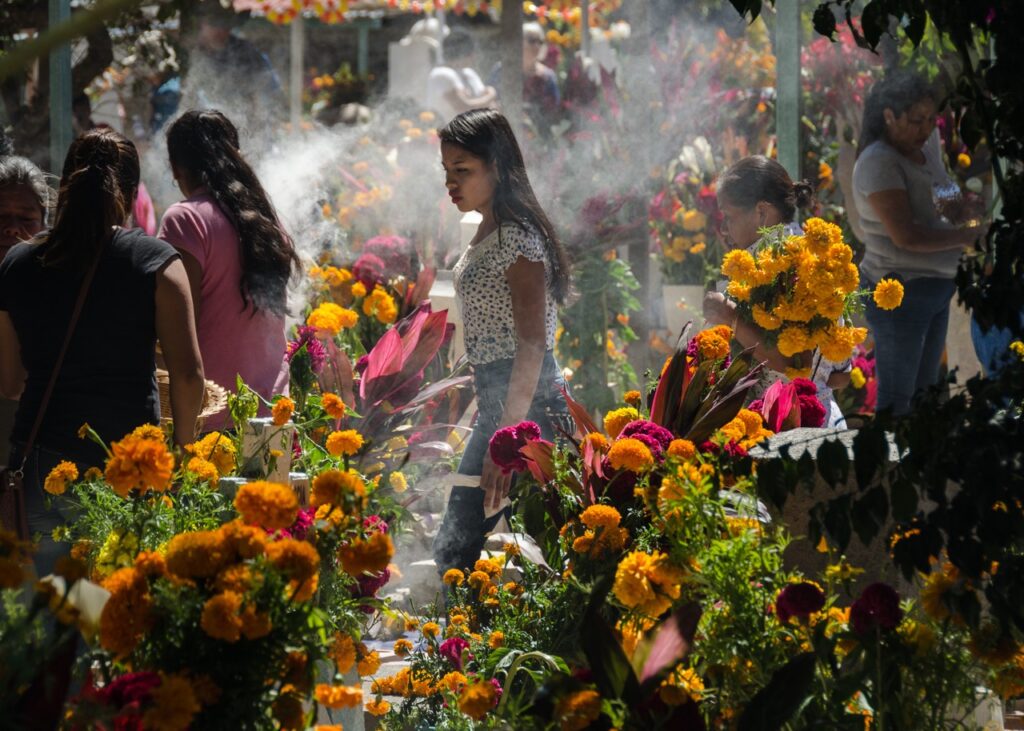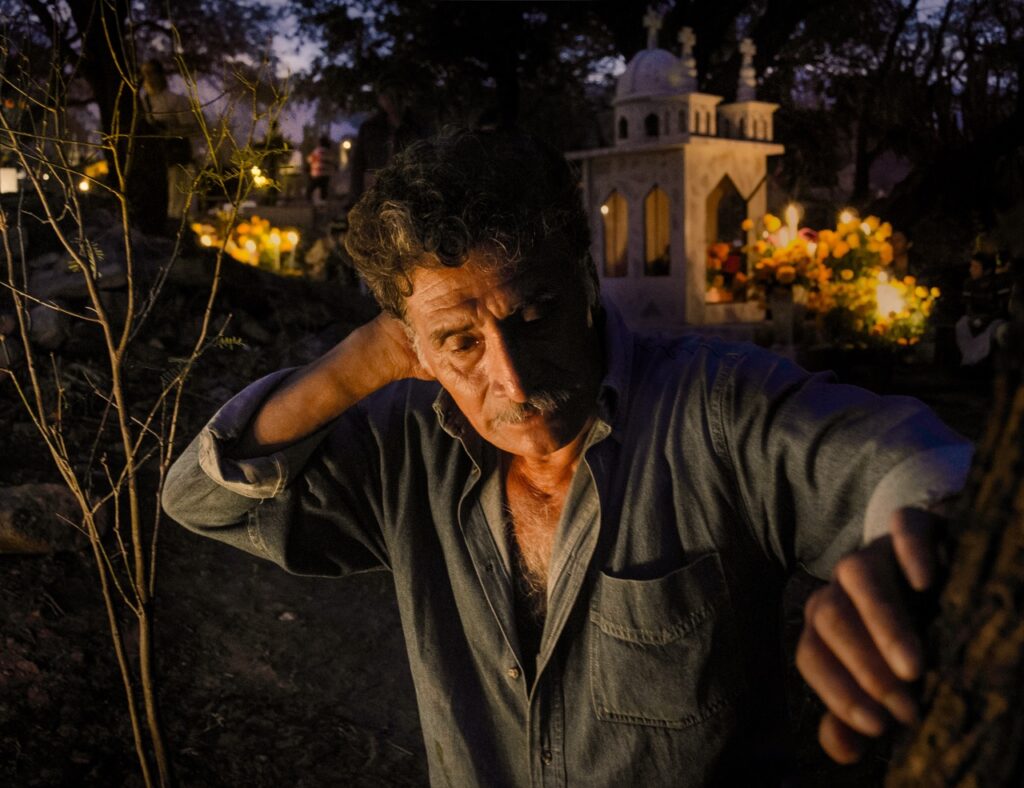The end of October finds most Americans having Halloween fun with costumes, candy, pumpkins and parades. In Mexico, our neighbor to the south, many of the same elements (plus vast quantities of marigolds) combine in fascinating ways in the Day of the Dead holiday, celebrated on November 1 and 2. Both observances have shared roots in the Catholic traditions of All Hallows Eve, All Saints Day and All Souls Day, a triad in the church calendar which honors Catholicism’s more than 10,000 saints as well as the souls of the dearly departed who’ve left this life for the next.

Experience the Day of the Dead in Mexico
While Halloween’s ghouls and goblins give us a whistling-in-the-dark chance to laugh off the prospect of death, Day of the Dead customs take on a different flavor. Pre-Columbian beliefs at least 3,000 years old trace a complicated, nine-level transition from death bed to final repose. Aztec, Toltec, and Nahua families would begin the summer with gifts of food and water to sustain their loved ones during that long journey.

During the Spanish period, these customs combined with autumn-time Catholic observances to create the Day of the Dead holiday, two days during which the barrier between the living and the dead dissolves, allowing ancestors to come back to visit, and offering the living a chance to remember and to honor them. Once a holiday celebrated mostly in the rural areas of Mexico’s southern states, Day of the Dead has grown in recent decades into a national, and increasingly international, ritual.

Remembering Those We Love
In Oaxaca, along Mexico’s southernmost Pacific coast, altars with the name ofrendas are in most homes, with elaborate arrangements of flowers, photographs, and offerings of water and food. Grandmother’s favorite dessert might sit next to a bowl of Uncle’s favorite soup and a stack of a beloved Cousin’s tortillas – all of it featuring marigolds, whose bright color and pungent aroma guide the old souls back home, and a candle for each departed relative. Images and sculptures of skulls and skeletons, and fragrant copal incense, both pre-Columbian traditions, complete the picture.

While centered in the home, observances spill out into the public sphere with open-air parties and processions to cemeteries just outside traditional town boundaries. Graves are decorated; pathways are strewn with marigold petals; sweet pan de muerto (bread of the dead) is served, along with other traditional foods; hot chocolate and pulque, a fermented agave beverage, are sipped. Pulque (along with beer and mezcal) help fuel dancing and music and noise-making and general revelry in the streets.

But these do not eclipse heartfelt moments of remembrance and mourning. The point of the whole affair is to keep close the memories of dear ones, and to ease their loss by weaving the idea of death into a positive interaction with life. Perhaps this underlying intention, which addresses a primal human concern in ways at once poetic, tender, and joyous, is the reason for Day of the Dead’s increasing popularity.

Story and Photography by Eric Mindling

Subscribe to TABLE Magazine’s print edition.
